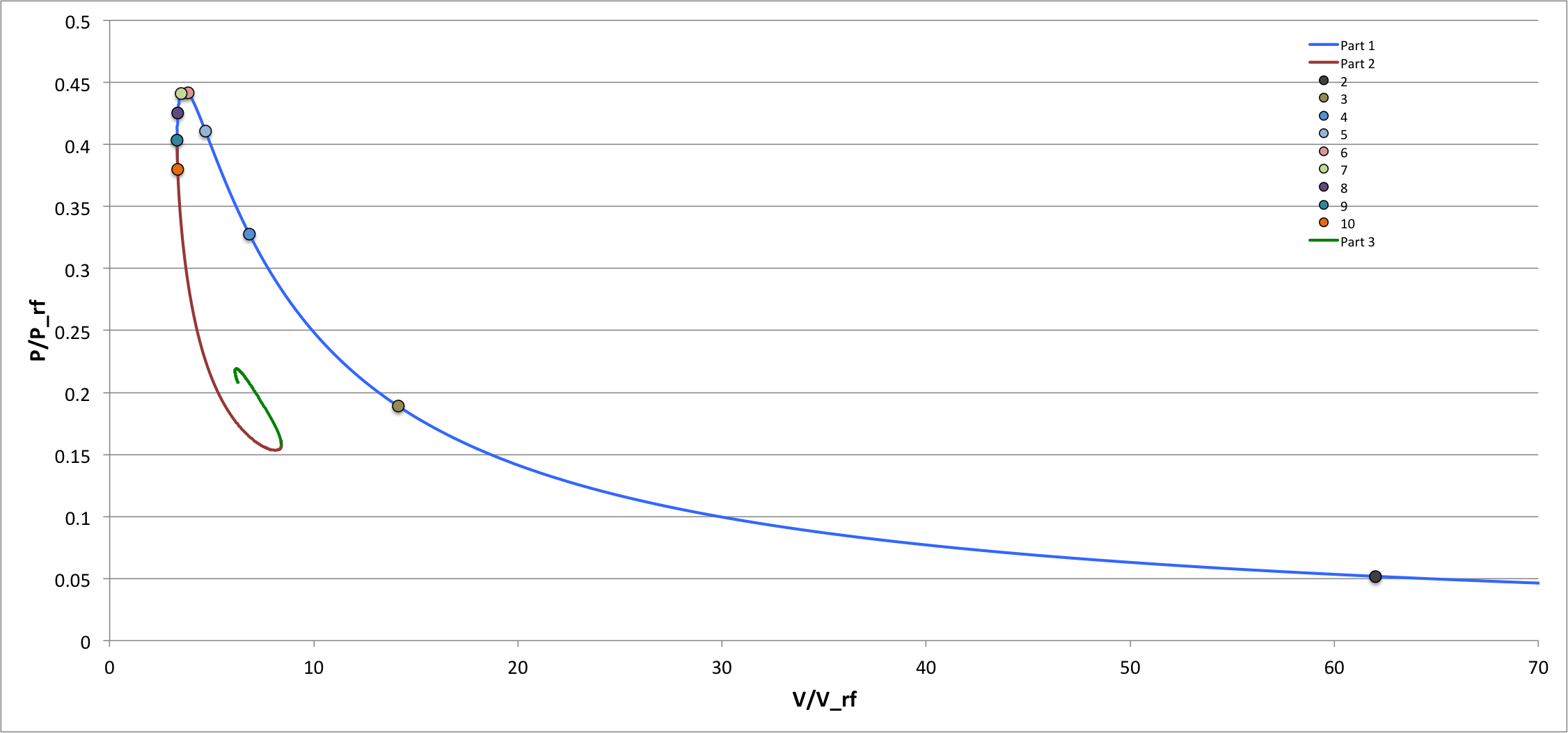Difference between revisions of "User:Tohline/SSC/Stability/InstabilityOnsetOverview"
| Line 9: | Line 9: | ||
The internal structure of a detailed force-balance model is provided via the function, <math>~\psi(\xi)</math>, which is a solution to the, | The internal structure of a detailed force-balance model is provided via the function, <math>~\psi(\xi)</math>, which is a solution to the, | ||
<div align="center"> | <div align="center"> | ||
<table border=" | <table border="0" cellpadding="8" align="center"> | ||
<tr><td align="center"> | <tr><td align="center"> | ||
Isothermal Lane-Emden Equation <p></p> | <font color="maroon"><b>Isothermal Lane-Emden Equation</b></font> <p></p> | ||
{{ User:Tohline/Math/EQ_SSLaneEmden02 }} | {{ User:Tohline/Math/EQ_SSLaneEmden02 }} | ||
</td></tr> | </td></tr> | ||
| Line 81: | Line 81: | ||
==Polytropic== | ==Polytropic== | ||
For any value of the index, <math>~n</math> — here, we restrict the discussion to values in the range, <math>~3 \le n < \infty</math> — the internal structure of a detailed force-balance model is provided via the function, <math>~\theta(\xi)</math>, which is a solution of the, | |||
<div align="center"> | |||
<table border="0" cellpadding="8" align="center"> | |||
<tr><td align="center"> | |||
<font color="maroon"><b>Polytropic Lane-Emden Equation</b></font> <p></p> | |||
{{ User:Tohline/Math/EQ_SSLaneEmden01 }} | |||
</td></tr> | |||
</table> | |||
</div> | |||
To identify pure radial oscillation modes, we seek solutions to the, | |||
<div align="center"> | |||
<font color="maroon"><b>Polytropic LAWE</b></font><br /> | |||
{{ User:Tohline/Math/EQ_RadialPulsation02 }} | |||
</div> | |||
[[File:CommentButton02.png|right|100px|Comment by J. E. Tohline on 19 March 2017: As far as we have been able to determine, it has not previously been recognized that this eigenvector provides a precise solution to the Polytropic LAWE.]][[User:Tohline/SSC/Stability/Isothermal#Try_to_Generalize|We have discovered]] that, for any value of <math>~n</math> in the range being considered here, the following eigenvector specification provides a | |||
<div align="center"> | |||
<table border="0" cellpadding="5" align="center"> | |||
<tr> | |||
<td align="center" colspan="3"><font color="maroon"><b>Precise Solution to the Polytropic LAWE</b></font></td> | |||
</tr> | |||
<tr> | |||
<td align="right"> | |||
<math>~\sigma_c^2 = 0</math> | |||
</td> | |||
<td align="center"> | |||
and | |||
</td> | |||
<td align="left"> | |||
<math>~x = 1 + \biggl(\frac{n-3}{n-1}\biggr) \biggl( \frac{1}{\xi \theta^{n}}\biggr) \frac{d\theta}{d\xi} \, .</math> | |||
</td> | |||
</tr> | |||
</table> | |||
</div> | |||
=References= | =References= | ||
Revision as of 18:23, 19 March 2017
Overview: Marginally Unstable Pressure-Truncated Configurations
Additional details may be found here.

|
|---|
| | Tiled Menu | Tables of Content | Banner Video | Tohline Home Page | |
Isothermal
The internal structure of a detailed force-balance model is provided via the function, <math>~\psi(\xi)</math>, which is a solution to the,
Isothermal Lane-Emden Equation
|
Equilibrium sequence for pressure-truncated configurations is displayed in three ways.
|
Figure 1: Bonnor's P-V Diagram |
|
This equation — in the following, slightly rewritten form — can be found among our selected set of key equations associated with the study of radial pulsation, and will henceforth be referred to as the,
Isothermal LAWE
|
<math>~0 = \frac{d^2x}{d\xi^2} + \biggl[4 - \xi \biggl( \frac{d\psi}{d\xi} \biggr) \biggr] \frac{1}{\xi} \cdot \frac{dx}{d\xi} + \biggl[ \biggl( \frac{\sigma_c^2}{6\gamma_\mathrm{g}}\biggr)\xi^2 - \alpha \xi \biggl( \frac{d\psi}{d\xi} \biggr) \biggr] \frac{x}{\xi^2} </math> |
|
|
where: <math>~\sigma_c^2 \equiv \frac{3\omega^2}{2\pi G\rho_c}</math> and, <math>~\alpha \equiv \biggl(3 - \frac{4}{\gamma_\mathrm{g}}\biggr)</math> |
|
Yabushita (1974, 1975) showed that one valid,
| Precise Solution to the Isothermal LAWE | ||
|
<math>~\sigma_c^2 = 0</math> |
and |
<math>~x = 1 - \biggl( \frac{1}{\xi e^{-\psi}}\biggr) \frac{d\psi}{d\xi} \, .</math> |
When viewed in concert with the surface boundary condition,
|
<math>~\frac{d\ln x}{d\ln\xi}</math> |
<math>~=</math> |
<math>~- 3 \, ,</math> |
the relevant configuration is precisely defined by the surface condition, xxx, which is identical to the configuration at the turning point.
Polytropic
For any value of the index, <math>~n</math> — here, we restrict the discussion to values in the range, <math>~3 \le n < \infty</math> — the internal structure of a detailed force-balance model is provided via the function, <math>~\theta(\xi)</math>, which is a solution of the,
Polytropic Lane-Emden Equation
|
To identify pure radial oscillation modes, we seek solutions to the,
Polytropic LAWE
|
<math>~0 = \frac{d^2x}{d\xi^2} + \biggl[ 4 - (n+1) Q \biggr] \frac{1}{\xi} \cdot \frac{dx}{d\xi} + (n+1) \biggl[ \biggl( \frac{\sigma_c^2}{6\gamma_g } \biggr) \frac{\xi^2}{\theta} - \alpha Q\biggr] \frac{x}{\xi^2} </math> |
|
|
where: <math>~Q(\xi) \equiv - \frac{d\ln\theta}{d\ln\xi} \, ,</math> <math>~\sigma_c^2 \equiv \frac{3\omega^2}{2\pi G\rho_c} \, ,</math> and, <math>~\alpha \equiv \biggl(3 - \frac{4}{\gamma_\mathrm{g}}\biggr)</math> |
|
We have discovered that, for any value of <math>~n</math> in the range being considered here, the following eigenvector specification provides a
| Precise Solution to the Polytropic LAWE | ||
|
<math>~\sigma_c^2 = 0</math> |
and |
<math>~x = 1 + \biggl(\frac{n-3}{n-1}\biggr) \biggl( \frac{1}{\xi \theta^{n}}\biggr) \frac{d\theta}{d\xi} \, .</math> |
References

|
|---|
|
© 2014 - 2021 by Joel E. Tohline |


